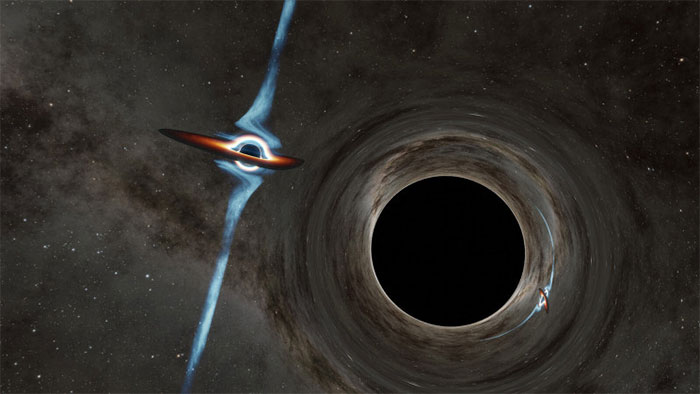Astronomers from Caltech have discovered two black holes, located 9 billion light-years away from Earth, on the brink of merging.

Artist’s impression of merging black holes. (Image: Caltech / R. Hurt (IPAC).
The observations were conducted over 13 years by astronomers at the Owens Valley Radio Observatory in Northern California. They revealed that a previously observed radio black hole, PKS 2131-021, has a companion black hole. This makes it a supermassive binary black hole. The standard model is an active galactic nucleus, where supermassive black holes pull material from an accretion disk.
According to the Caltech report, the two supermassive black holes orbit each other every two years. Each object in this vast space has a mass hundreds of millions of times greater than our Sun, and they are separated by a distance greater than approximately 50 times that between the Sun and Pluto. Their findings were published in a paper in the Astrophysical Journal Letters.
The two black holes are expected to merge in about 10,000 years (a short time on cosmic scales), leading to a violent collision that is believed to send gravitational waves rippling through the universe. In fact, in November 2021, astronomers from the University of Colorado Boulder released a report based on computer simulations of two black holes at the center of colliding galaxies. They stated that the collision could cause a “gravitational wave smash” strong enough to distort the shape of a galaxy.
Astronomers have detected a powerful jet stream emanating from the vicinity of the black holes. The jets are observed to be oscillating back and forth. This is a sign of the orbital motion of the detected pair, identified through the periodic changes in the brightness of the radio waves emitted by the black holes.
The researchers explained that their discovery will enhance the understanding of violent processes that can reshape entire galactic structures. From there, they gain deeper insights into the evolutionary history of our galaxy.

















































